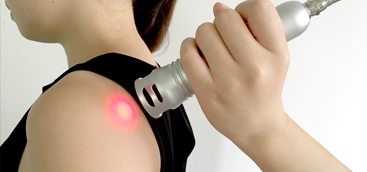Abstract
Low-level laser therapy (LLLT) has proved to have biostimulating effects on tissues over which they are applied,therefore accelerating the healing process. Most studies in implantology were focused on a reduction of the duration of osseointegration. There exist few articles analyzing the poten-tial effects of these therapies on the osseointegration of titani-um dental implants. The aim of this study was to assess the effect of LLLT on the interaction between the bone and the titanium dental implant and the methodological quality of the studies. We conducted an electronic search in PubMed, ISI Web, and Cochrane Library. From 37 references obtained,only 14 articles met the inclusion criteria. The analysis of the studies shows that most of the experiments were per-formed in animals, which have a high risk of bias from the methodological point of view. Only two studies were conduct-ed in human bone under different conditions. Several proto-cols for the use of low-power laser and different types of laser for all studies analyzed were used. Although animal studies have shown a positive effect on osseointegration of titanium implants, it can be concluded that it is necessary to improveand define a unique protocol to offer a more conclusive result by meta-analysis.
dental laser
Keywords
Low-level laser therapy,Dental implants,dental laser manufacturer,Biological processes
Introduction Early scientific research with laser in dentistry was carried out at the beginning of the 1960s and went on until the 1980s. However, it was not until the 1990s that the Food and Drug Administration (FDA, USA) approved for the first time the use of laser, Nd-YAG in this particular case, for the surgery of soft tissues in the oral cavity. Numerous advances have been made since then, and they have led to the generalization of the use of laser, either high- or low- power ones, in the different fields of dentistry for treat- ment such as of oral mucositis [ 1], tooth sensitivity [ 2], osteonecrosis [ 3], or alveolar osteitis [ 4] pain in orthodon- tic treatment [5 ]. Low-power laser has proved to have biostimulating effects on tissues over which it is applied, therefore accelerating the healing process. In implantology, most studies were focused on a reduction of the duration of osseointegration [ 6, 7].
Technical background Lasers may be classified in multiple ways, regarding their active medium, their wavelength, their emission patterns, or other criteria. It is usual to classify them taking into account the power at which they are going to be used. Therefore, two main groups of lasers can be considered: high-power lasers and low-power lasers [ 8]. Low-level lasers are those that emit within the red spectrumorthenear-infraredregionwithanaverag power from 50 mW to 1 W. Since their action is mainly based on photochemical effects, they have the distinctive property of not raising tissue temperature. The most common kinds of low-power lasers are (1) gallium arsenide (GaAs) laser (pulsed laser with a wavelength of 904 nm), (2) fiber optic-transmissible gallium and aluminum arsenide (GaAlAs) laser (with a wavelength of 830 nm), and (3) helium – neon (HeNe) laser (with a wavelength of 632.8 nm), the latter emit- ting within the visible spectrum, specifically the red one. Since they lack thermal effect, low-energy lasers are not generally used in surgery. Indeed, their power is lower and the area of effect is larger than that in the high-energy ones. Therefore, the heat is dispersed and may not result in alterations of the bone tissue. Never- theless, they are mainly used because of their cell bio- stimulating, analgesic, and a nti-inflammatory actions. Currently, they are mainly applied to accelerate tissue regeneration and wound healing while reducing inflam- mation and pain [ 9]. Also, they are frequently used to treat dentin hyperesthesia and to act as an antibacterial disinfecting method in endodontic and periodontal treat- ments [ 10].

Conclusion
As a general conclusion, it should be observed that despite the fact that LLLT has proved to provide multiple benefits regarding tissue regeneration, there are not enough clinical studies which analyze the effects of this treatment on im- plant osseointegration. It can be drawn from this update that, according to experimental research results, LLLT might be a useful help to the osseointegration process, although in the current state of knowledge, there is a lack of human clinical studies.

